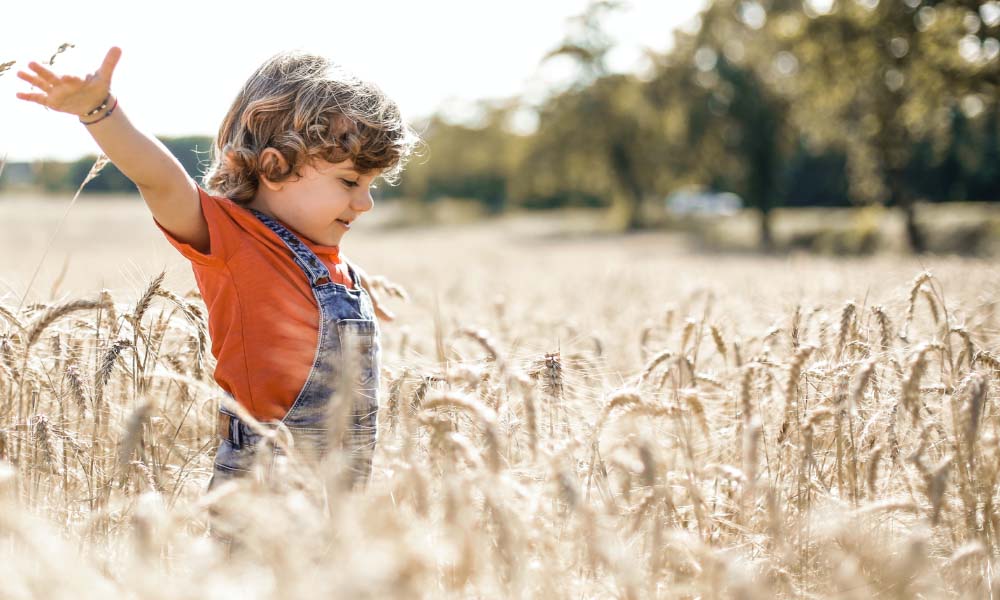You don’t need a lot to inspire STEAM thinking with your kids. To start with the basics, STEAM is an approach to learning that starts with Science, Technology, Engineering, the Arts and Mathematics as touch points for guiding inquiry, dialogue, and critical thinking.
Incorporating STEAM can be as easy as encouraging your kids to be observant and ask questions about the world around them. Here are some simple ways to inspire curiosity and creativity with your family this Thanksgiving.
1 | Go for a walk outside
Yes, it’s that simple. (Bonus: you can walk off a piece or two of pumpkin pie!). Or you can head into nature for another low-key adventure and some fresh air.
Here are some things to point out:
- The leaves on trees: Why do you think they change color during fall? Pro Parent Tip: When the weather gets colder and the days get shorter, trees stop producing chlorophyll – the stuff that makes leaves green and turns sunlight into plant food. Trees shed their leaves to conserve resources for the long winter. You can find more information about why leaves change color, as well as a kid-friendly guide to identifying different tree species here. Kid Challenge: How many different kinds of leaves can your child collect? Why do they think some leaves are bigger than others, or rounder, or fuzzier?
- Animals in the neighborhood: Squirrels, birds, skunks, raccoons.... Where do these animals live, and how do they adapt for the colder temperatures of fall and winter? Pro Parent Tip: Animals adapt for colder months through behaviors like hibernation, hoarding, and migration because it gets harder to find food in the winter. You might think that only bears hibernate, but you’d be surprised! Kid Challenge: Do you see squirrels collecting nuts? Where do you think they put them, and why do you think they do that? Do you see any birds flying south for the winter?
- The sun in the sky: Why does it get dark early at this time of year? Have you noticed that the sun isn’t as high in the sky during winter as it is in the summer? Pro Parent Tip: It’s all due to something called an analemma, which describes the Earth’s imperfect orbit (1 orbit = 1 year) and rotation (1 rotation = 1 day) relative to the Sun. Over the course of a year, the Sun’s position relative to Earth makes a figure-eight, because the Earth doesn’t orbit the Sun in a perfect circle, and it spins on a tilt relative to its orbit. For half of the year, the northern hemisphere is tilted toward the sun (our summer), and for half of the year it’s tilted away from the sun (our winter). That’s why seasons are reversed between the hemispheres, and why the sun rises higher in the sky during our summer months. Kid Challenge: When it’s winter here, what season is it in Australia (and everywhere in the Southern hemisphere)? Older kids might appreciate this video that gives the “reasons for the seasons.”
2 | Have a geometry lesson – with food!
Pies are a great opportunity to learn about circles. For younger kids, ask if they can identify other circle and sphere-shaped foods, like Brussels sprouts and cranberries.
Pro Parent Tip: The distance from the center of a circle to its outside edge – the radius – is always the same. That’s what makes it perfectly round. The distance from one edge to the other (through the center) is called the diameter, and the distance around a circle – its perimeter – is called the circumference. The ratio of a circle’s circumference to its diameter is always the same, no matter the size of the circle, and that ratio is known as pi! What do you get when you divide a pumpkin’s circumference by its diameter? Pumpkin pi!
Kid Challenge: Prove that all points on the edge of a circle are the same distance to the center by measuring from the edge of a piecrust to the middle of the pie with kitchen twine and a ruler. Older kids can divide the circumference by the diameter of different-sized circles to prove the ratio (pi) never changes.
3 | Ask older relatives what their childhoods were like
What was most different, and what things are similar? What activities did they enjoy? How has technology changed? Task your kids with being the scribe and recording their memories and experiences.
Craving more hands-on STEM activities? These are sure to be a hit:
4 | Cranberry Catapult
What’s more fun than flinging food at each other while also learning about projectile physics? Nothing. Give your kids a few extra cranberries from the kitchen, and tell them to go nuts! Let them experiment with projectiles of different weights and mass. How are the trajectories of lighter or heavier projectiles affected differently by gravity? Just make sure the kiddos take this project outside if they’re using projectiles likely to stain (like cranberries).



